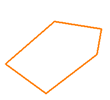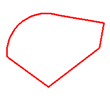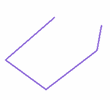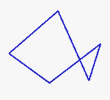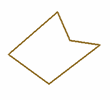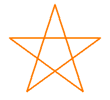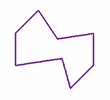
- •Zahola n., Mynda o., Spenik Sz. English for Mathematicians
- •Isbn isbn 978-966-2095-20-3 © Загола н.В.
- •Contents
- •Vocabulary Notes
- •Exercises
- •I. Answer the following questions on the text:
- •II. Read the following numbers:
- •III. Make up a dialogue on the text. Lesson 2 addition
- •Vocabulary notes
- •Exercises
- •I. Answer the following questions on the text:
- •II. Give the Hungarian equivalent for the following words and word combinations. Use them in sentences of your own:
- •Vocabulary Notes
- •Exercises
- •II. Give the Ukrainian for the following words and word combinations. Use them in sentences or questions of your own:
- •Lesson 4 multiplication
- •Vocabulary Notes
- •Exercises
- •I. Answer the following questions on the text:
- •II. Give the Hungarian equivalents for the following words and word combinations. Use them in sentences of your own:
- •III. Multiply the following numbers orally:
- •Lesson 5 division
- •Vocabulary Notes
- •Exercises
- •I. Answer the following questions on the text:
- •II. Give the Ukrainian words for the words and word combinations. Use them in the sentences of your own:
- •III. Divide the following numbers orally:
- •Lesson 6 algebraic expression
- •Vocabulary notes
- •Exercises
- •I. Answer the following questions on the text:
- •II. Give the Hungarian for the following words and word combinations. Use them in sentences of your own:
- •Lesson 7 equations and proportions
- •Vocabulary Notes
- •Exercises
- •I. Answer the following questions on the text:
- •II. Give Hungarian translation for the following words and word combinations. Use them in the sentences of your own:
- •Lesson 8 decimal numerals
- •Vocabulary notes
- •Exercises
- •I. Answer the following questions on the text.
- •II. Are the following statements true or false according to the text?
- •III. Say the following in English.
- •IV. Form derivatives from the following words and translate them into Hungarian:
- •V. Find the following words and word combinations in the text. Guess their meanings. Make up your own sentences with them.
- •VI. Ask questions to which the following sentences could be answers.
- •Lesson 9 decimal and common fractions
- •Vocabulary notes
- •Exercises
- •I. Answer the following questions on the text:
- •III. Write your own examples of different types of fractions and read them in English. Lesson 10 mathematical sentences
- •Vocabulary notes
- •Exercises
- •I. Answer the following questions on the text:
- •II. Read the following mathematical sentences and decide whether they are open or closed, true or false.
- •IV. Say the following in English.
- •V. Translate the following sentences into Hungarian paying attention to the words in bold type.
- •VI. Make up 5 open and 5 closed true/false sentences.
- •VII. Find the odd word out:
- •Lesson 11 rational numbers
- •Vocabulary notes
- •Exercises
- •I. Answer the following questions on the text.
- •II. Find the following words and word combinations in the text. Guess their meanings. Make up your own sentences with them.
- •III. According to the text the following statements are either true or false. If you think they are false, say why. Begin your statements with:
- •IV. Say the following in English.
- •VI. Ask questions to which the following sentences could be answers.
- •Lesson 12
- •Irrational numbers
- •Vocabulary notes
- •Exercises
- •I. Answer the following questions on the text.
- •II. Change the sentences to negative and to question form.
- •III. Form derivatives from the following words and translate them:
- •IV. Find in the text the following words and word combinations. Guess their meanings. Make up your own sentences with them.
- •Part II Lesson 1 geometry
- •Vocabulary notes
- •Exercises
- •I. Answer the following questions on the text.
- •II. According to the text are the following statements true or false? If you think they are false, say why. Begin your statements with:
- •III. Find the following words and word combinations in the text. Guess their meanings. Make up your own sentences with them.
- •IV. Write questions to which the words in bold type in the following sentences are the answers:
- •V. Find synonyms to the following words in the text, translate them into Hungarian:
- •VI. Give English equivalents to the Hungarian nouns in the left column using English verbs in the right column.
- •VII. Translate the dialogue into English and reproduce it in pairs:
- •Vocabulary Notes
- •Lesson 2 from the history of geometry
- •Vocabulary Notes
- •Exercises
- •I. According to the text, are the following statements true or false?
- •V. Find English equivalents to the given sentences in the text.
- •VI. Translate the following sentences into Hungarian, paying attention to the words in bold type. Make your own sentences with them.
- •VII. Match each word on the left with its translation on the right.
- •Lesson 3 the meaning of geometry
- •Vocabulary notes Babylonia – Babilónia
- •Exercises
- •II. According to the text are the following statements true or false? If you think they are false, say why. Begin your statements with:
- •III. Ask questions using the question words in brackets. Translate the given sentences.
- •IV. Find in the text the following words and word combinations. Guess their meanings. Make up your own sentences with them.
- •V. Form derivatives from the following words and translate them into Hungarian:
- •VI. Find in the text antonyms to the following words. Translate them into Hungarian:
- •Lesson 4 rays, angles, simple closed figures
- •Simple Closed Figures
- •Vocabulary Notes
- •Exercises
- •I. Answer the following questions on the text:
- •II. Choose the right name for the following figures. There is one extra name.
- •III. Translate into Hungarian the following geometrical definitions. Learn them by heart.
- •IV. Read the following text, say into how many logical parts it could be divided and render it either in English or Hungarian. Something about Euclidean and Non-Euclidean Geometries
- •Lesson 5 c ircles
- •Vocabulary Notes
- •Exercises
- •I. Answer the questions on the text:
- •II. Write a plan of the text “Circles”.
- •III. Translate the following sentences into Hungarian paying attention to the words in bold type.
- •IV. Say the following in English:
- •Lesson 6 the pythagorean property
- •Proof of the Pythagorean Theorem
- •Vocabulary notes
- •Exercises
- •I. Answer the questions on the text:
- •II. Ask questions using the question-words in brackets:
- •III. A) Speak on the Pythagorean Property. Draw a picture to help you while speaking.
- •IV. Read the text below and render it either in English or in Hungarian. Square Root
- •V. Translate the following into English:
- •VI. Submit your theorem in English according to the pattern.
- •Vocabulary notes
- •Exercises
- •I. Agree or disagree with the following:
- •II. Find out in the text the following word-combinations. Use them in sentences of your own:
- •III. Match each word on the left with its translation on the right.
- •IV. Read the text. Fill in the chart given below about a desktop personal computer Fantasy x22.
- •VI. Translate into Hungarian paying attention to the words in bold type.
- •VII. Try to remember.
- •VIII. Discussion.
- •IX. Choose the proper name to each part of the computer.
- •Lesson 2 from the history of computers
- •Vocabulary notes
- •Exercises
- •I. Read the text. Write the key questions about it to ask your fellow-students.
- •II. In the sentences below some statements are true and some are false. Copy out the true statements.
- •III. Check if you know the meaning of the following words. Translate them into Hungarian:
- •IV. Pay attention to the following words. Try to remember them.
- •V. Translate the following sentences into Hungarian paying attention to the words in bold type.
- •VI. Translate into English.
- •VII. Read the information about masters of invention. Be ready to speak about Charles Babbage and Howard Aiken. Charles Babbage (1792-1871).
- •Charles Babbage, Master Inventor
- •Howard Aiken (1900-1973).
- •Howard Aiken, a Step Toward Today
- •Lesson 3 what is a computer?
- •Vocabulary notes
- •Exercises
- •I. Answer the following questions.
- •II. What is the Hungarian for:
- •IV. Match the word on the left with its translation on the right.
- •V. Pay attention to the following words. Try to remember them.
- •VI. Translate the following sentences into Hungarian.
- •VII. A) Read the text. Computers
- •Lesson 4 computers: the software and the hardware
- •Vocabulary notes
- •Exercises
- •I. Answer the following questions.
- •III. Pay attention to the following terms. Try to remember them.
- •IV. Translate the following sentences into English.
- •V. Translate the following sentences into Hungarian paying attention to the words in bold type.
- •VI. Read the text and put key questions.
- •Lesson 5 windows
- •Vocabulary notes
- •Exercises
- •I. Read the text to find answers to the following questions.
- •II. Find in the text definitions of the terms you find to be the most important to you.
- •III. According to the text agree or disagree with the following.
- •V. Translate into English.
- •VI. Pay attention to the following terms. Try to remember them.
- •VII. Translate into Hungarian.
- •VIII. Topic “The computer we use at the university”.
- •Lesson 6 communication with computer
- •Vocabulary notes
- •Exercises
- •I. Read the text. Write the key questions about it to ask your fellow students.
- •II. In the sentences below some statements are true and some are false. Copy out the true statements.
- •III. Find out in the text the following word-combinations. Use them in sentences of your own.
- •V. Make the right choice and fill in the blanks.
- •VI. Translate the following into Hungarian.
- •VII. Look through the text. List the principal ideas.
- •VIII. Topic for discussion: Modern Programming Languages. Lesson 7 computer networks
- •Vocabulary notes
- •Exercises
- •I. Read the text and answer the following questions.
- •II. According to the text agree or disagree with the following statements.
- •III. Translate into English:
- •IV. Pay attention to the following terms. Try to remember them.
- •V. Translate into Hungarian.
- •VI. Read quickly through the text below, then make the summary.
- •Lesson 8 what is the internet?
- •Vocabulary notes
- •Exercises
- •I. Read the text .Write the key questions about it to ask your fellow students.
- •II. In the sentences below some statements are true and some are false. Copy out the true statements.
- •III. Find out the following word-combinations in the text. Translate them into Hungarian:
- •IV. Translate into Hungarian.
- •V. Translate into English.
- •VI. Read the information about the Internet. List the principle ideas.
- •VII. Retell the text. The name internet
- •Lesson 9
- •Internet innovations
- •I. Do you use the Internet? How often do you use it?
- •II. Before reading the text match the following technological words to their definitions.
- •III. Read the text.
- •What’s New?
- •Vocabulary notes
- •IV. Answer the questions.
- •V. Read the following text and answer the questions after it.
- •Questions
- •VI. Read the text about Internet cheats. Make notes about it. Discuss it with your group mates. Cheating.Com
- •VIII. Choose the correct answer to the questions.
- •Vocabulary notes
- •Exercises
- •I. Answer the following questions on the text:
- •Lesson 2 mathematics – the queen of science
- •Vocabulary notes
- •Exercises
- •I. Answer the questions on the text:
- •II. Find in the text English equivalent for:
- •IV. Find in the text words with the suffixes –al, -ous, -ment, -y, -ly. Define what part of speech they form. Translate the words into Hungarian.
- •Texts for additional reading
- •What is mathematics
- •Text 2 mathematics - the language of science
- •Text 3 myths in mathematics
- •Text 4 mathematics and art
- •Part V Outstanding mathematicians
- •Vocabulary Notes
- •Text 2. Pierre de Fermat.
- •Text 3. N.I.Lobachevsky (1792-1856 ).
- •Text 4. M.V. Keldysh.
- •Text 5. Isaac Newton.
- •Text 6. Johann Carl Friedrich Gauss
- •Text 7. Blaise Pascal
- •Mathematical symbols and expressions
- •Reading of mathematical expressions
- •Список використаної літератури:
- •Загола н.В., Минда о.І., Шпеник с.З., Ярославцева к.В.
- •Навчально-методичний посібник для студентів математичного факультету
V. Form derivatives from the following words and translate them into Hungarian:
to begin, to build, to define, to apply, knowledge, to improve, study, relation, location, to refer, ruler, extension
VI. Find in the text antonyms to the following words. Translate them into Hungarian:
young, to finish, destroying, ignorance, to lose, to answer, to make worse, to forget, curved, definitely, disagree
VII. Translate the following sentences into English:
1. Remélünk javítani a rendszeren.
2. Megrajzolni egy ilyen geometriai alakzatott könnyű.
3. Nem ismerve a test méreteit nem tudjuk kiszámítani a térfogatát.
4. Az ABC betüit a pontok jelölésére hasznáják.
5. A szakasz hossza vonalzó segitségével mérhető meg.
6. Látnak-e hasonlóságot a két létesítmény között?
7. Ennek a tárgynak a formáját nem tudtuk pontosan megállapítani.
8. Ma egy érdekes előadást hallottunk az ógörög tudósokról, a mértan alapítóiról.
Lesson 4 rays, angles, simple closed figures
You certainly remember that by extending a line segment in one direction we obtain a ray. Below is a picture of such an extension.

The arrow
indicated that you start at point M, go through point N, and on
without end. This results in what is called ray MN, which is denoted
by the symbol
![]() .
Point M is the endpoint in this case. Notice that the letter naming
the endpoint of a ray is given when first naming the ray.
.
Point M is the endpoint in this case. Notice that the letter naming
the endpoint of a ray is given when first naming the ray.
From what you already know you may deduce that drawing two rays originating from the same endpoint forms an angle. The common point of the two rays is the vertex of the angle.
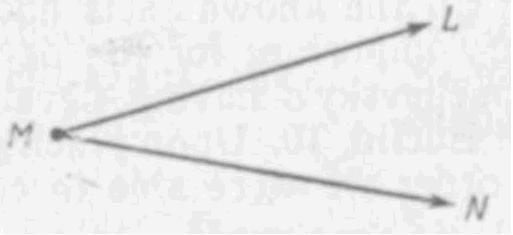
Angles though open figures, separate the plane into three distinct sets of points: the interior, the exterior, and the angle. The following symbol is frequently used in place of the word angle. The angle pictured above could be named in either of the following ways: a) angle LMN; b) angle n VML. The letter naming the vertex of an angle occurs as the middle letter in naming each angle. Look at the drawing below.
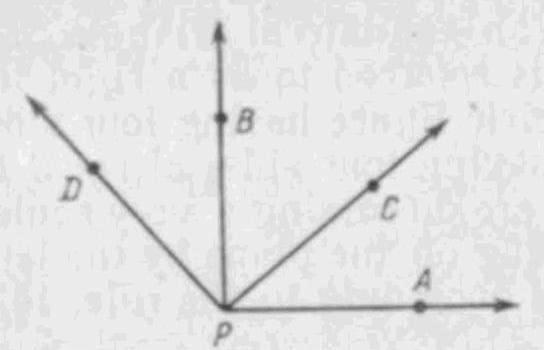
Ray PA and
ray PB form a right angle, which means that the angle has a measure
of 90° (degrees). Since
![]() (except for point P) lies in the interior of APB,
we speak of CPA
being less than a right angle and call it an acute angle with a
degree measure less than 90°. Since
(except for point P) lies in the interior of APB,
we speak of CPA
being less than a right angle and call it an acute angle with a
degree measure less than 90°. Since
![]() (except for point P) lies in the exterior of APB,
we say that APB
is greater than a right angle and call it an obtuse angle with a
degree measure greater than 90°.
(except for point P) lies in the exterior of APB,
we say that APB
is greater than a right angle and call it an obtuse angle with a
degree measure greater than 90°.
Simple Closed Figures
A simple closed figure is any figure drawn in a plane in such a way that its boundary never crosses or intersects itself and encloses part of the plane. The following figures below are examples of simple closed figures. Every simple closed figure separates the plane into three distinct sets of points. The interior of the figure is the set of all points in the part of the plane enclosed by the figure. The exterior of the figure is the set of points in the plane which are outside the figure. And finally, the simple closed figure itself is still another set of points.
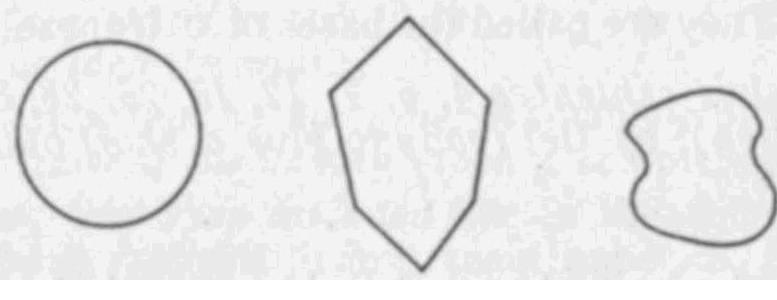
A simple closed figure formed by line segments is called a polygon. Each of the line segments is called a side of the polygon.
|
|
|
Polygon (straight sides) |
Not a Polygon (has a curve) |
Not a Polygon (open, not closed) |
The polygons can be divided into the following types.
Simple or Complex. A simple polygon has only one boundary, and it doesn't cross over itself. A complex polygon intersects itself!
|
|
Simple Polygon (this one is a Pentagon) |
Complex Polygon (also a Pentagon) |
Concave or Convex. A convex polygon has no angles pointing inwards. More precisely, no internal angles can be more than 180°.
If there are any internal angles greater than 180° then it is concave. (Think: concave has a "cave" in it)
|
|
Convex |
Concave |
Regular or Irregular. If all angles are equal and all sides are equal, then it is regular, otherwise it is irregular.
|
|
|
|
|
Regular |
Irregular |
Complex Pentagon (a "star polygon") |
Concave Octagon |
Irregular Hexagon |
Polygons may be classified according to the measures of the angles or the measure of the sides. This is true of triangles - geometric figures having three sides - as well as of quadrilaterals, having four sides.
C
A B
|
F
D E |
L
K M |
In the picture above you can see three triangles.
Δ ABC is referred to as an equilateral triangle. The sides of such a triangle all have the same linear measure. Δ DEF is called an isosceles triangle which means that its two sides have the same measure. You can see it in the drawing above. Δ LMK being referred to as a right triangle means that it contains one right angle. In Δ MKL < LM is the right angle, sides MK and ML are called the legs, and side KL is called the hypotenuse. The hypotenuse refers only to the side opposite to the right angle of a right triangle.
A parallelogram is a quadrilateral whose opposite sides are parallel. Then the set of all parallelograms is a subset of all quadrilaterals. Why? A rectangle is a parallelogram in which all angles are right angles. Therefore we can speak of the set of rectangles being a subset of the set of parallelograms. A square is a rectangle having four congruent sides as well as four right angles. Is every square a rectangle? Is every rectangle a square? Why or why not? A rhombus is a parallelogram in which the four sides are congruent. Thus, it is evident that opposite sides of a rhombus are parallel and congruent. A trapezoidal has only two parallel sides. They are called the bases of a trapezoidal.

